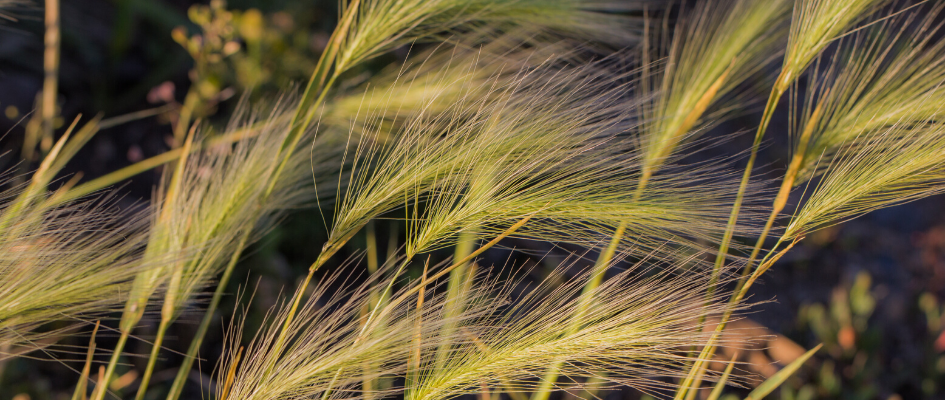At this time of year grass seeds are a common problem and can pose a real threat to dogs if left unfound or untreated as the seeds can work their way into the skin and become infected or cause lameness. The tops of long grass stems found in gardens or parks can become very dry during the summer months and will easily attach themselves to your dog’s fur as they walk past, without you even noticing. Paws, ears and under the armpit are the most common affected areas, so what can you do to protect your dog from grass seeds?
How do I tell if my dog has an issue with a grass seed?
Your dog may show signs that it is being irritated by a grass seed such as:
- excessively biting or licking the affected area, especially in between the toes
- shaking their head if there is a grass seed in the ear, or pawing at the head
- sneezing excessively if there is a seed up the nose
- a closed, uncomfortable eye
If the grass seed has pierced the skin, you may notice swelling around the affected area. Occasionally, the only sign of a grass seed infection might be lethargy or loss of appetite if the grass seed has penetrated into the internal body cavities of the chest, throat or abdomen.
Are all dogs affected by grass seeds?
Yes, all dogs can be affected by grass seeds, but especially those breeds that have longer fur and feathered toes. It is best to check your dog over as soon as you get home from your walk to catch any stray seeds that may have attached themselves and dispose of them.

What if I cannot remove the grass seed?
A grass seed that is seen on the surface of your dog’s fur is easily removable, but if you notice the grass seed has burrowed its way into the skin or if you think you dog has a grass seed in their eye or ear, contact your local Goddard Veterinary Practice immediately.
How can I protect my dog from grass seeds?
- Try and avoid letting your dog roam or jump around in long grassy areas
- Check your dog over with your hand when back at home, paying attention to the feet, the inside of the ears and the armpit
- Brush out any seeds you may find and dispose of them in a bin
- Look out for any signs that a grass seed may be irritating your dog
- Have your dog regularly groomed if the coat is prone to matting, or has a long coat.
Long grassy areas are also a haven for ticks and fleas, so be sure to keep your preventative treatment up to date and dog protected.
I need more advice, what should I do?
Call and speak to one of the team for advice or book an appointment. We’re here to help.
